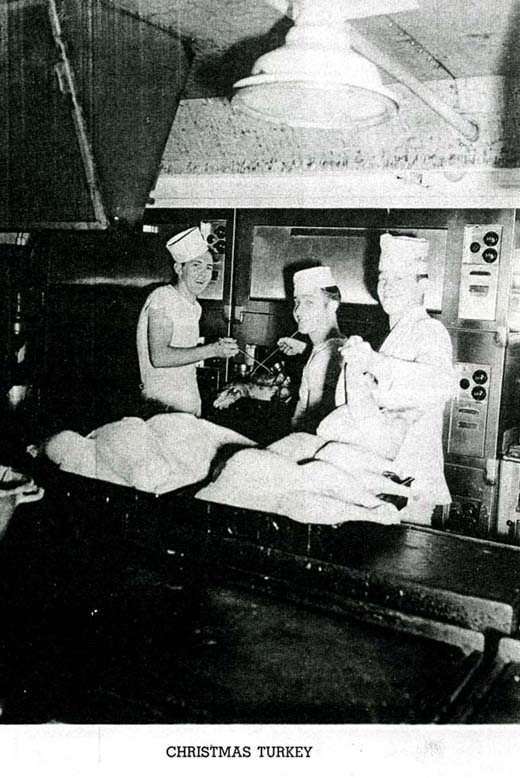Two weeks ago, I had the great fortune to meet Pasquale “Pat” Fedele, CA-69 Boston plank owner, who served on her from pre-Commissioning (June 30, 1943) until post-Occupation Duty (Feb. 28, 1946). Pat was a Coxswain, and in addition to his duties with the L R Division (Lookout and Radar), he was part of the singing trio aboard ship known as the “3 B’s.”
Pat ran enemy ship and plane ID classes, and was an NCO in the same bridge area of the ship as my dad (who was on the Signal Bridge). My dad was also a plank owner, having arrived in Boston from boot camp (Sampson in upstate NY) on May 15, 1943. Pat, a native of Providence, RI, went to boot camp in Newport, RI. Both he and my father were among the hundreds and hundreds of men barracked in the Fargo Building in South Boston, helping as “able hands” to prepare the ship for departure to the action in the Pacific.
Pat is one of the Original Crewmembers who read my book. Communicating via email through his grandson, we set up a Sunday afternoon meeting time — for chat and dinner at his house. It took some coordination – I live more than 500 miles away – and, of course, everyone has a busy schedule.
I spent six delightful hours with Pat and his gracious family. It was tremendously satisfying to be in their company. Pat knew and was a friend of my dad — whom he fondly calls Billy. It was the first time in my life that I have met someone who served on the Boston with my father.
Pat, who is almost 86 years young, is active and alert, and still breaks out in song at the slightest excuse! He told me many stories of the Boston – none of which are in my book – – – yet. We are planning a second visit, and I will press for more details and more stories. I am currently thinking about how to incorporate his stories into a revision of my book.

